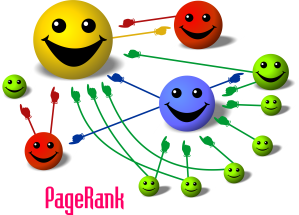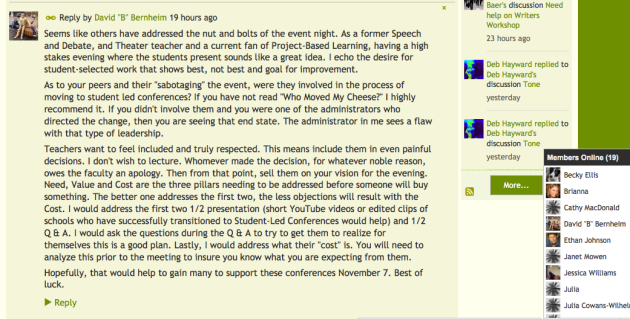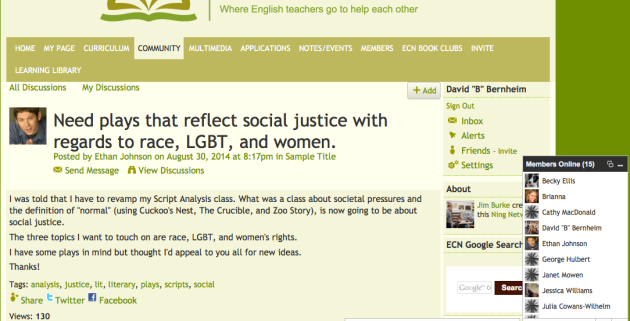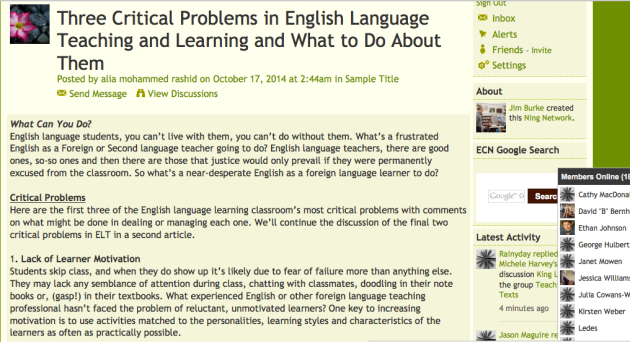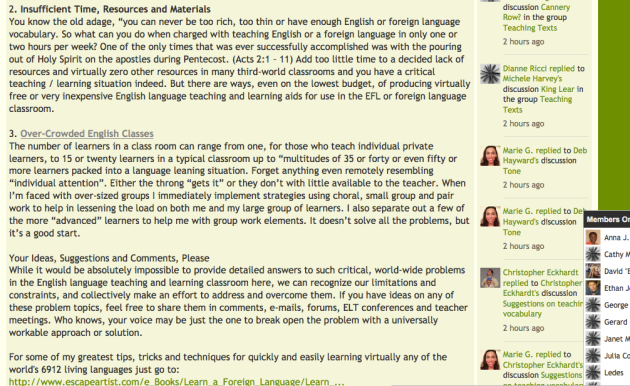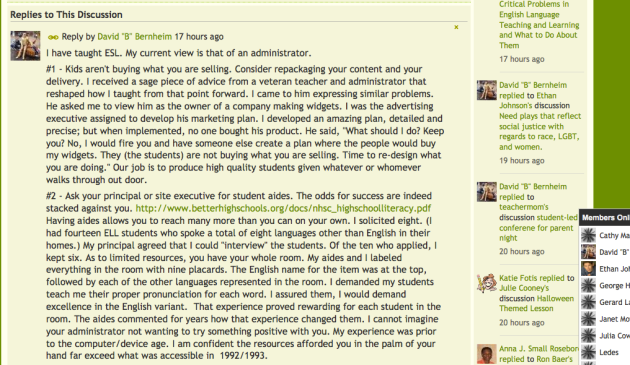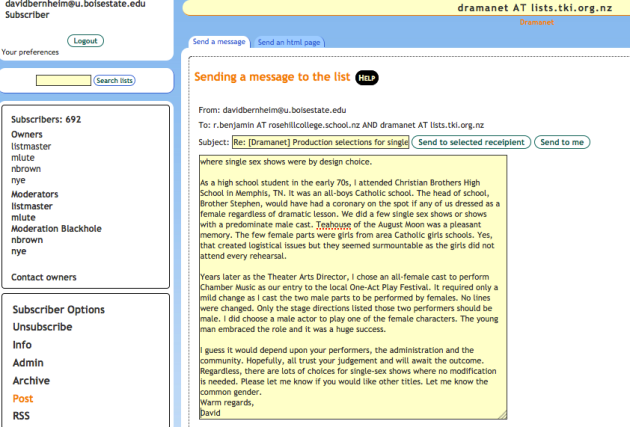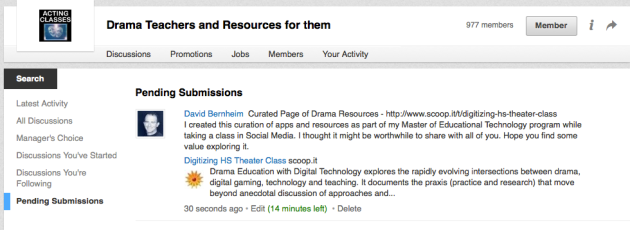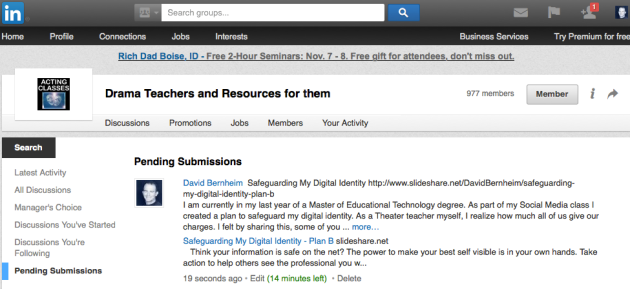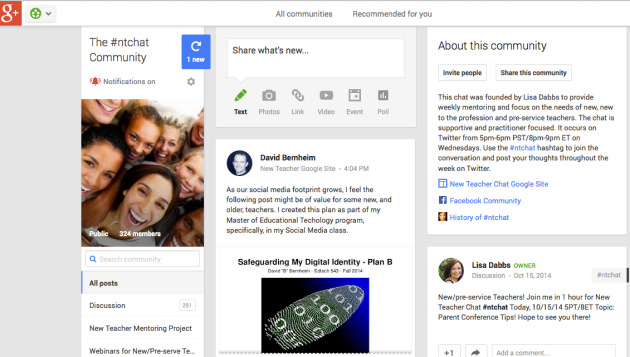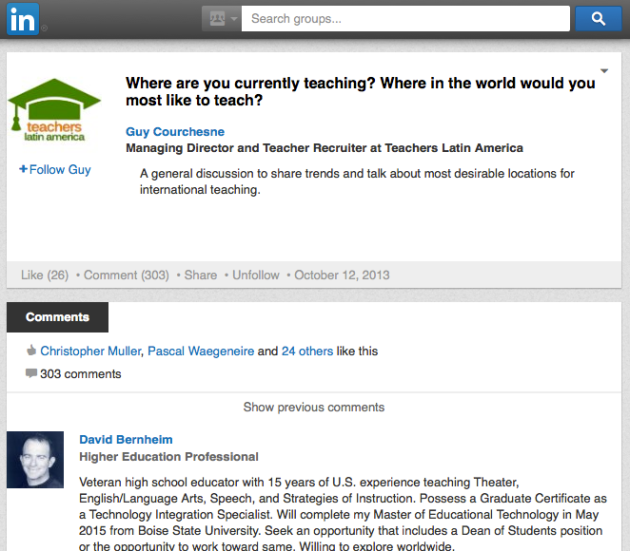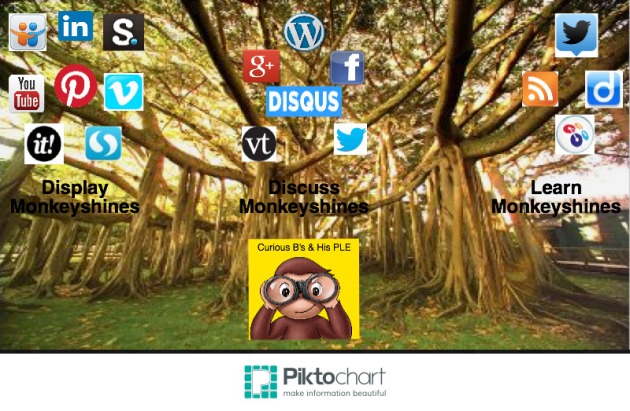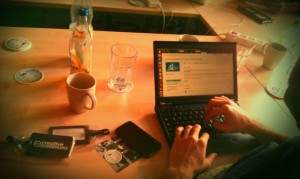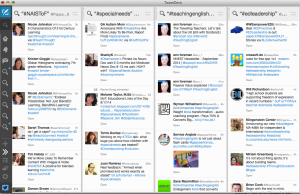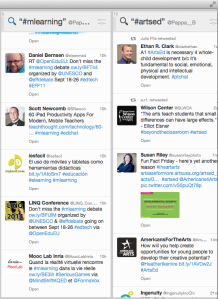Final Reflection EdTech 543 – Social Network Learning
December 8, 2014 Leave a comment
I have to pinch myself to believe my MET journey nears completion. This is my final blog entry prior to entering Portfolio this spring. I am pleased to have saved Social Network Learning for my last class. This class proved to be a real eye-opener and yet allowed me to utilize knowledge gleaned from preceding classes.
What Did You Learn?
I see Kwai Chang Caine, with contrived oriental music in the background, wanting to begin with “But Master, I learned so much. I do not know where to begin.” And that would be the truth. However, we must answer, Grasshoppers. We must think.
Points That Stood Out For Me:
I created a Plan Be to “be my best me” composed of positive statements to direct and focus my own actions. I spent two extra hours trying to override Screencast-o-matic YouTube user profiles as I wanted to use the professional profile I created in this class. Fearing I would lose my recording that took far too many attempts to clip under fifteen minutes, I ultimately capitulated. However, the amount of distress I put myself through certainly underscored for me how much I learned about my own digital footprint and what, who and how I want myself represented in the digital world.
The Curation of Theatre Social Networking Case Studies assignment proved a challenging assignment, and yet I found great value in my struggles to be precise in my search and sharing. I truly wanted the product to be something of value over a numerical grade. The Twitter/Tweetdeck Chat assignment proved the value of that medium for professional development. Again, I would not have gone that direction without prodding.
I dreaded the Peer Review of the last project and yet once again, I discovered how the assignment should look by choosing students I admired to review. I also discovered just how much I learned by drawing on my Evaluation for EdTech, Internet for Educators, Intro to EdTech and numerous other classes creating speaking points in the review of my peers.
What Do You Plan To Apply In Your Professional Practice?
As an educator and administrator, I predict Curation, PLNs, Twitter/Tweetdeck, Emodo & Canvas Learning Platforms, Social Networked Learning Units and Peer Review/Crowdsourced Grading would all be elements I would weave into lessons for both students and faculty. I have already shared my Social Media policy ideas with a few hiring authorities. I would love to be a part of revamping forward-thinking policies at my next school.
I always viewed myself as a great communicator in both the written and spoken word. I see through this course that I have much to learn and cannot assume that just because I write or say something that it is processed on the other end, especially in a digital space. I must continue to own both areas and work to ensure that processing has taken place. By the same token, I have to ask questions to make certain I am processing as well. My own assumptions can get in the way and that was never more evident than in the course. I own that and recognize I must be the instrument of change and do all I can to make that process smooth.
Growing up in the Deep South, I shared more than one meal with families who worshipped differently than my own. Jews do not experience baptism. However, I have been to the river in this course, experienced total immersion and feel renewed. I want to carry this knowledge forward and spread the gospel of Social Network Learning. I feel stirred by the knowledge acquired and truly want to incorporate all that I have learned into a more relevant and current educator and administrator.
Reflect and Assess Your Blog Experience and Grade Your Performance
My blog posts honestly reflected my journey. I offered resources when pertinent and applicable. My posts were not casual or minimal by any means. I feel I exceeded expectations by being honest and candid about the topic, lessons and how I dealt with struggles throughout. Though I feel that work was exemplary, I did not blog outside the classroom box. I am trying to move beyond my own reservations and that continues to be a struggle. The length of this post notwithstanding, I have more to travel in my journey to become a habitual blogger. For that reason alone, I cannot bring myself to say I deserve one hundred percent of credit for my blogging in a Social Network Learning class. I feel 70/75 is an accurate score for my work.
